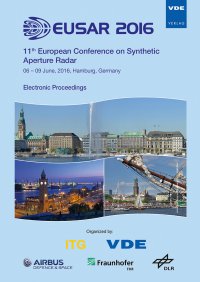Sentinel-1B Independent In-Orbit System Calibration - First Results
Conference: EUSAR 2016 - 11th European Conference on Synthetic Aperture Radar
06/06/2016 - 06/09/2016 at Hamburg, Germany
Proceedings: EUSAR 2016
Pages: 4Language: englishTyp: PDF
Personal VDE Members are entitled to a 10% discount on this title
Authors:
Schwerdt, Marco; Schmidt, Kersten; Tous Ramon, Nuria; Castellanos Alfonzo, Gabriel; Doering, Bjoern; Zink, Manfred; Prats, Pau (Center for Sensor Systems (ZESS), University of SiegenMicrowave and Radar Institute of the German Aerospace Center (DLR), P.O.Box 1116, 82230 Weßling, Germany)
Abstract:
Sentinel-1 is the first space-borne SAR mission in the frame of ESA’s Copernicus program. The main objective of the Sentinel-1 mission is to ensure the continuity of SAR data acquisitions for global monitoring C-band SAR applications. The mission is based on two satellites flying with an orbit phasing of 180 degree in a near- polar sun-synchronous orbit. The second satellite Sentinel-1B is scheduled for launch in spring of 2016, i.e. 2 years after launch of the first satellite Sentinel-1A. As already done for Sentinel-1A in 2014, in addition to the commissioning of Sentienl-1B executed by ESA, an independent SAR system calibration will be performed by DLR. For this purpose, the complete calibration chain was developed and established by DLR, starting with an efficient calibration strategy, a detailed in-orbit calibration plan, the SW-tools for analyzing and evaluating all the measurements up to the calibration targets serving as accurate reference. As Sentinel-1B was not yet launched at the time of uploading the paper, the different activities to be performed by DLR are described in example of Sentinel-1A measurements. A discussion of radiometric and geometric calibration results of Sentinel-1B will be presented at the conference on June 2016.


